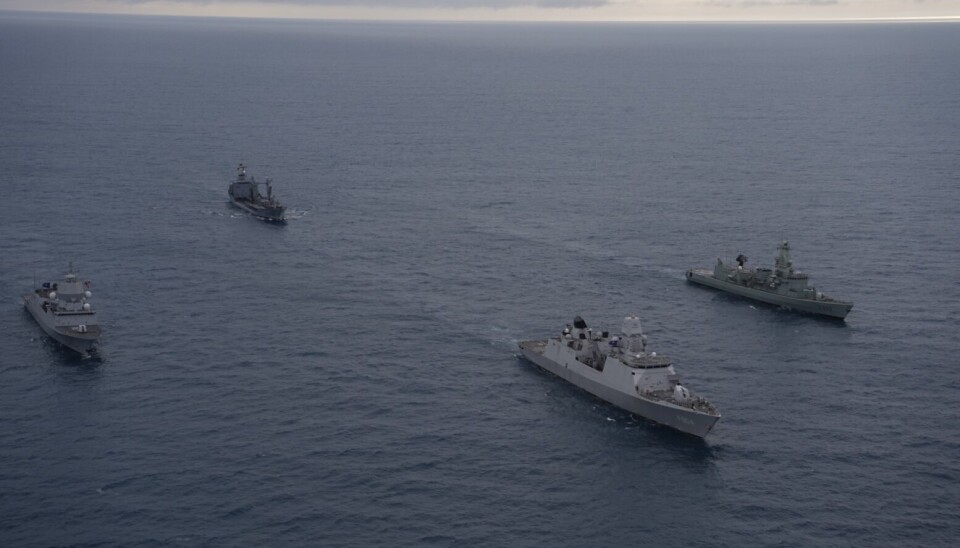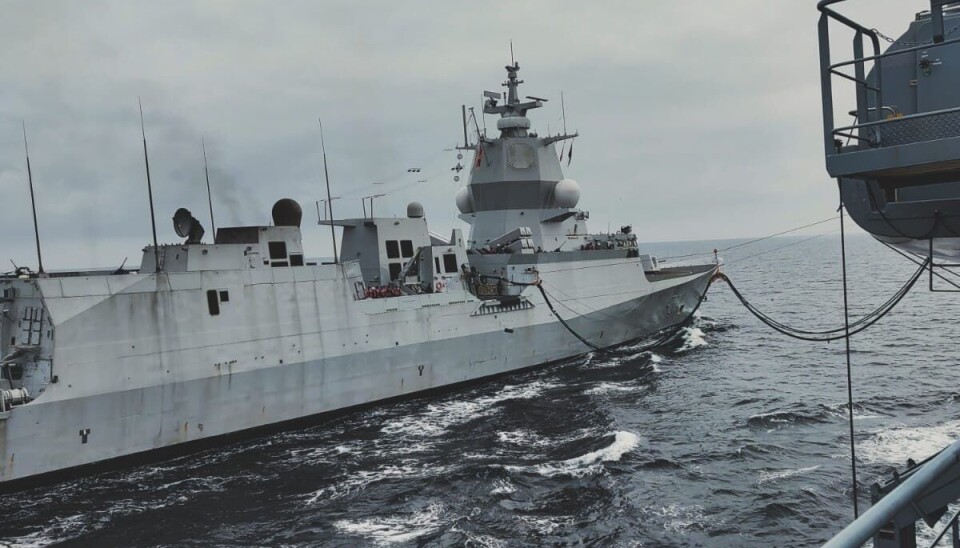
NATO group sailed the Barents Sea as Russia launched multiple missiles in exercise
Three frigates, a navy tanker and maritime surveillance aircraft have over the last week operated inside the Arctic Circle, including the Barents Sea where Russia on Sunday launched multiple missiles from submarines and from shore.
The multination Standing NATO Maritime Group One (SNMG1) has since last weekend been patrolling the Norwegian- and Barents Seas in what is said to "protect critical sea lines of communication" and reflects ongoing concern with maritime security.
"Our operations in the Arctic and High North reflect the Alliance’s enduring commitment to peace, stability, and freedom of navigation. Operating in this region demands resilience, adaptability, and seamless cooperation – qualities NATO forces continue to demonstrate every day,” the Alliance stated in a press release.
The release is dated July 28 and includes a photo from the Barents Sea. Hours before, Russia launched multiple missiles in the same Barents Sea.

NATO doesn't detail where the group of warships was sailing on Sunday, more than saying that it was in Arctic waters and the Barents Sea.
Neither is the Russian live fire exercise mentioned in NATO's communication to the media.
This is the second time after Russia's full-scale invasion of Ukraine in February 2022 that non-Norwegian NATO surface warships are on patrol in the Barents Sea. Last October, two U.S. Navy destroyers of the Arleigh Burke-class made a high-profile entry to the western sector of the Barents Sea.
The Barents Sea north of the Kola Peninsula is highly sensitive for the Russian nuclear-armed submarine fleet. In recent years, the Northern Fleet has exercised more intensively in the Norwegian Exclusive Economic Zone, like last week when an area more than twice the size of Denmark was marked as "dangerous" because of missile firing.
About half of the area was in the Russian exclusive economic zone, while the other was in Norwegian waters. The area covered most of the southern part of the previous disputed waters between Norway and Russia.

According to the press service of the Northern Fleet, the exercise July Storm ended on Sunday July 27 with the launching of a Granit cruise missile from the Oscar-II class nuclear powered submarine Orel and a Kalibr cruise missile from the Yasen class submarine Severodvinsk. Both shootings took place in the Barents Sea.
From a Bastion mobile launch system on the shores of the Fishermen Peninsula, several Oniks supersonic anti-ship missiles were launched at sea targets.
Norway's Armed Forces monitored the Northern Fleet's maneuvers and shootings, but they are unwilling to provide details.
"Russian firing exercises and notified danger areas are normal activity," said Vegard Norstad Finberg, spokesperson with the Joint Headquaters in an email to the Barents Observer.
"We are monitoring this activity, like other activity in northern regions with existing sensors. For classified security reasons, we cannot share this information."
NATO furthermore does not detail how far east in the Norwegian sector of the Barents Sea its group of warships sailed.
SNMG1 is one of NATO’s four standing maritime task groups under the operational control of Allied Maritime Command (MARCOM). These task groups form the core maritime capability of NATO’s Allied Reaction Force (ARF) and provide continuous maritime capability to execute NATO missions across the spectrum of operations, demonstrating solidarity and strengthening the bond and interoperability between Allied naval forces.
On July 28, simultaneously as the NATO warships were sailing the Barents Sea, a Norwegian P-8 Poseidon maritime patrol aircraft was training around the Svalbard airport Longyear, including a touch-and-go on the runway.
Russia is no longer the only one showing military muscles at high latitudes.

















